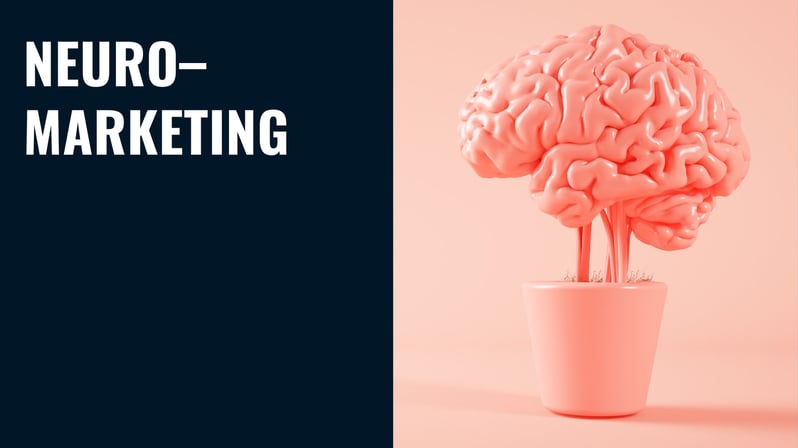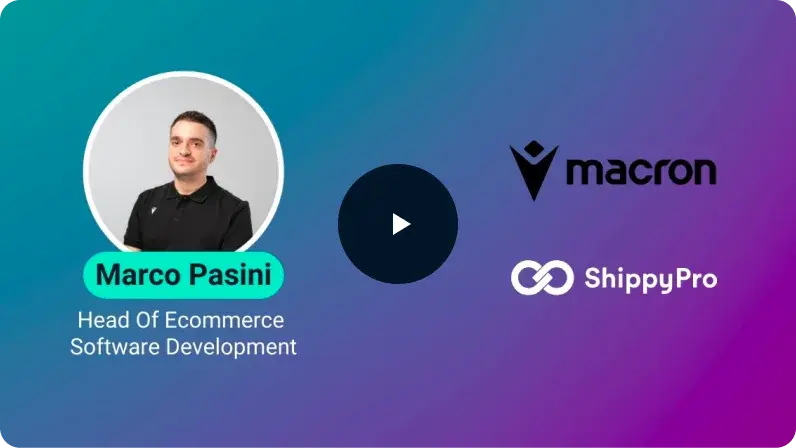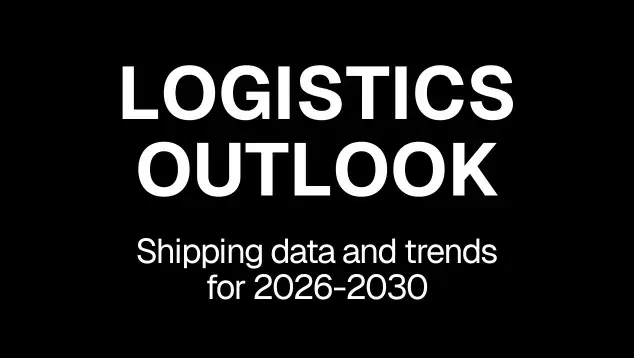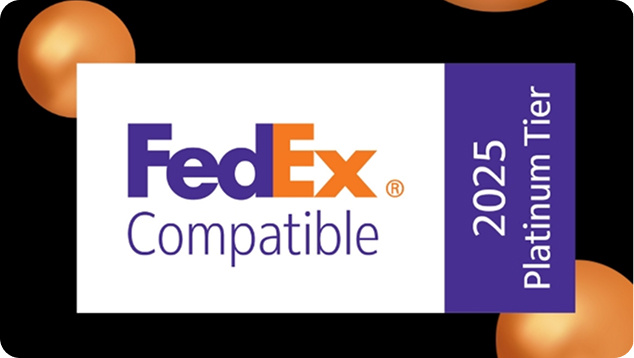What is neuromarketing? 5 strategies and 5 examples to apply it

Have you ever wondered why candy, sweets and other small “unnecessary” products are always next to supermarket counters? The answer is simple and can be summed up in a single word: neuromarketing.
Neuromarketing is the science that has led supermarket owners to realise that consumers are more inclined to spend small amounts of money on unnecessary products after filling their shopping cart with more expensive and basic necessities.
Basically, thanks to neuromarketing we have a scientific explanation of why spending 1 euro on sweets is easier after knowing that the products that are already in our trolley are going to cost more.
But neuromarketing can be applied in many other areas, not only supermarkets, and it can improve the performance of any business, online and offline.
In this article you will find out exactly what neuromarketing is, how it works and discover the best techniques you can implement for your business, with easy and practical examples.
What is neuromarketing?
Neuromarketing is a science born from different branches of marketing and psychology, and analyses people's behaviour during the purchasing process, from the first touchpoint to the final purchase.
This is because it has been found that the consumer does not make purchasing decisions based only on rational processes such as the quality/price ratio or the advantages and disadvantages of a particular product or service.
On the contrary, people are deeply influenced by irrational, emotional factors, of which they are very often unaware.
Neuromarketing measures those exact unconscious processes that take place in consumers’ minds, and which lead them to make certain decisions.
This measurement is acquired by analysing an individual’s physiological reaction when exposed to various forms of stimuli, thus testing the effectiveness of marketing strategies that aim to involve and convert the consumer.
To do this, neuromarketing employs advanced technologies that collect information on all those psychological, emotional, and irrational processes that traditional surveys or interviews wouldn’t be able to measure.
Neuromarketing analyses psychophysiological variations such as eye-tracking, skin conductance, heart rate, facial expressions, as well as the encephalogram of consumers to draw conclusions and allow companies to make informed decisions on their marketing strategies based on scientific data.
When was neuromarketing born?
The term neuromarketing began to appear around 2002 with the research of Ale Smidts, professor of Marketing Research at the Rotterdam School of Management. Since then, the first US organisations have begun to offer consulting and research-based neuromarketing services by combining the technology at their disposal with cognitive neuroscience.
The first neuromarketing research, initiated in 2003 and published in 2004, was conducted by Read Montague, neuroscience professor at Baylor College of Medicine.
The research consisted in giving a group of people Pepsi or Coca-Cola, while analysing their brain’s reactions with the functional magnetic resonance technique, which allowed them to visualise the hemodynamic response related to the neuronal activity of the brain.
In short, it is a technique that made them visualise which areas of the brain "lit up" in reaction to certain stimuli.
The findings of this study revealed that when individuals were unaware of the brand difference, distinct areas of their brain were activated (lit up).
So, when consumers didn't know which drink it was, they preferred Pepsi. While, when they were shown product packaging, most showed a preference for Coca-Cola.
As a result, it became clear that a brand with a strong presence and influence like Coca-Cola could capture an area of the frontal cortex of the consumers' brain.
No data on the logic behind these findings was published at the time, and the research was also subject to several criticisms. However, it paved the way for all the following neuromarketing research that led to the knowledge we have of it today.
This knowledge is what brought to the neuromarketing techniques that you can implement to optimise the communication and promotional efforts of your business.
Now, let's find out more about the most effective neuromarketing techniques.
5 effective neuromarketing techniques (with examples)
Neuromarketing is made up of a myriad of theories and strategies, some more easily applicable than others. Here you will find the top 5 neuromarketing techniques that you can immediately start testing for your business:
- Guiding the consumer's gaze
- Stimulating the sense of sight
- Using the sense of smell to stimulate imagination
- Using a somatic marker
- Following gaze with eye tracking
1. Guiding the consumer's gaze
Neuromarketing can guide the consumer's gaze both online and offline.
For example, think about how mannequins in brick-and-mortar stores are positioned to point to specific products, or to guide customers' gaze towards an item for sale.
The hands and face of the mannequins are often used to direct the gaze towards some products, perhaps those that have recently been released or on discount, so that customers notice them without realising the process that brought them to that point.
Similarly, in promotional images, the eyes and hands of testimonials are strategically employed to direct the viewer’s attention toward a key message or featured product.
![]()
In this example, thanks to eye-tracking technology (which we'll discuss shortly), it becomes evident that a fixed gaze acts as a magnet for the viewer, who ends up concentrating on it while almost completely ignoring the product.
Thanks to neuromarketing, we now know that this advertisement would have been much more effective if the testimonial's gaze had been directed towards the product, rather than towards the consumer.
2. Stimulating the sense of sight
Sight is one of the most "targeted" senses by neuromarketing, because it can be stimulated in different ways.
For example, selecting the appropriate font for texts – in digital or print formats - is extremely important if you desire to trigger an involuntary emotional reaction in the consumer.
An American candy brand should choose a playful and colourful font, while a law firm should opt for a minimal and elegant font.
The same goes for product packaging. There is no single rule to create effective packaging, it all depends on the sensation you want your customers to feel.

For example, Tiffany's packaging makes the brand instantly recognizable, as it conveys all the values that consumers associate with the brand through a single, distinctive colour.
3. Using the sense of smell to stimulate imagination
Smell is also a sense capable of stimulating consumers involuntarily, pushing them to certain behaviours.
An example is the sensory campaign conducted by Dunkin' Donuts in 2012 that was based on the unique scent of its products.
In Seoul, Dunkin' Donuts had air fresheners programmed to activate and spread the smell of its coffee only when the brand's commercial played on the radio.
It goes without saying, the bus ended right in front of a Dunkin' Donuts shop, so that people who got off the bus, smelling the coffee again, were immediately inclined to stop for a quick coffee.

4. Using a somatic marker
A somatic marker refers to the pleasant or unpleasant sensation we experience when contemplating a positive or negative outcome of a particular decision.
In neuromarketing, somatic markers can impact the effectiveness of an advertising message, enabling it to trigger the right emotion that guides the consumer towards making a purchase.
For example, Orange, a US telecommunications company, offered all San Francisco students the opportunity to paint their cars for free, as long as the paint colour was orange.
The hilarity of the gimmick, combined with the originality of the campaign, meant that thousands of orange cars suddenly appeared around the city, thus creating a somatic marker.
5. Following gaze with eye tracking
Eye tracking is a neuromarketing tactic that allows you to understand where consumers focus their attention when they are in front of a product, advertisement, or a website.
It can be used not only to determine whether a site is user friendly or not, but also to analyse the emotional involvement of those who browse those pages.
For example, if pupil dilation is recorded, users are reacting positively to what they see. If they fixate on a particular detail, it means that it is what struck them the most. If they blink often, it means that they are in a state of agitation, and so on.
Before neuromarketing, this type of information could only be obtained by interviewing individuals exposed to those advertisements or websites, but the answers were not 100% reliable.
It’s not that the people were insincere, but rather that the majority of these reactions occur on an unconscious level. As a result, those directly involved might not have been able to record these responses consciously, only memorising the general feeling experienced during the event.
In this sense, techniques such as the analysis of facial expressions, skin conductance (which indicates the amount of sweat produced by our body) or heartbeat analysis can also be essential for optimising your communication efforts thanks to neuromarketing.

Where is neuromarketing applied?
Neuromarketing has several applications, including:
- Advertising: It has a huge effect on consumer decision-making, and the way products and services are presented is rapidly and constantly evolving.
- Prices: price is one of the most important indicators in the consumer’s decision-making process, because it is immediately associated with the value of the purchase.
- Communication: written, verbal or visual, neuromarketing influences every area of communication, from storytelling to the facial expressions needed to convey a message.
- Product distribution: knowing the decision-making and behavioural processes of consumers allows companies to make informed decisions regarding the placement of products within their physical or digital store.
- Branding: every company can leverage the knowledge given by neuromarketing to create an emotional connection with customers and thus find a highly loyal target to refer to.
- Product design: colours, shapes, packaging. Every visual aspect of the product plays a fundamental role in the consumer decision-making process, and these aspects can be modified following neuromarketing theories.
These are just some examples of how neuromarketing can be applied. Basically, the more you study neuromarketing, the more you discover new ways in which its theories and findings become crucial to the success of a company.
Neuromarketing: 10 books you can’t miss
The ability of understanding the minds of consumers to increase sales and improve their promotional efforts is inevitably attractive. Fortunately, the resources at our disposal to study and expand our understanding of this topic are infinite.
Here are the 10 books that you really can't miss if you want to learn more about neuromarketing:
- Predictably Irrational by Dan Ariely: Why do we feel that pain killers are more effective if they are more expensive? This and other questions are uncovered in this book that explores the irrational forces that shape our decisions and behaviour. Ariely, a behavioural economist, examines everyday life situations, through anecdotes and studies, analysing various cognitive biases and emotional factors that demonstrate how many of our decisions are predictably irrational.
- Smart Persuasion by Philippe Aimé and Jochen Grünbeck: this book explores how neuromarketing can be applied to the world of ecommerce, combining behavioural economics and consumer psychology studies. It demonstrates how cognitive biases affect consumer purchasing decisions and shows how digital marketers can convey their brand values more effectively. There are also very useful and practical marketing strategies created and based on original studies.
- The persuasion code, by Morin, Renvoisé, Diotto: a book that represents and explains the complete model of persuasion, based on the most recent discoveries in the field of neuroscience.
- Buyology, by Martin Lindstrom: a book that blends marketing and neuroscience, with plenty of stories about how the brain, brands and emotions drive consumer choices.
- Neuromarketing, by Jessica L. Hughes: a book to understand what neuromarketing is and how influential the role of the unconscious is in decision-making processes.
- Influence: The Psychology of Persuasion by Robert B Cialdini: a bestseller in which the author examines the 7 principles of persuasion, uncovering each of these in useful tactics to apply in every-day-life.
- Brainfluence. 100 Ways to Persuade and Convince Consumers with Neuromarketing by Roger Dooley: an extensive guide on how to influence consumers’ decision-making process, examining how unconscious action triggers, brand trust, focus strategies etc. all impact the human mind in different ways.
- Made To Stick. Why Some Ideas Survive and Others Die by Chip Heath and Dan Heath: a book that uncovers the principles that make some ideas memorable and others not and explains how to create an idea that is successful.
- Webs of Influence. The Psychology of Online Persuasion by Nathalie Nahai: a guide on the psychology that lies behind online persuasion, and how different principles can be employed to create more effective online content.
- Decoded. The Science Behind What We Buy by Phil P. Barden: a book full of relevant examples that allows readers to understand the real science behind buying choices.
Neuromarketing: final thoughts
In conclusion, the goal of neuromarketing is to get people to do or buy certain things, using the mechanisms of the human mind as the main lever.
Consumers are constantly bombarded with information, advertising messages and incentives to purchase products and services of any type, and in most cases, even when one has the impression of making a rational choice, the emotional component always plays an important role.
Understanding and using neuromarketing to optimise your business promotion strategies will therefore help you to increase your conversion rate and revenue, while offering your customers an excellent shopping experience, without making them realise you are “playing” with their mind.
Neuromarketing FAQs
Here you will find answers to the most frequently asked questions about neuromarketing.
What is neuromarketing?
Neuromarketing is a discipline that studies the functioning of the human mind with the aim of predicting and influencing the behaviour and the process that leads consumers to make a purchasing decision.
Which are the neuromarketing techniques?
Among the main neuromarketing techniques we find eye-tracking, electroencephalogram, functional magnetic resonance, galvanic skin response, electrocardiogram, and recognition of facial expressions.
How can you become a neuromarketer?
Anyone can enter the world of neuromarketing. Generally, the requirements to become a neuromarketer are a degree, a scientific background in research and skills related to data analysis or big data.
Why is neuromarketing important to marketers?
Companies use neuromarketing to study and understand customer consumption and purchasing behaviour by measuring communication stimuli based on biological and neurological parameters.
Who invented neuromarketing?
Neuromarketing was invented in 2002 by Ale Smidts, Professor of Marketing Research at the Rotterdam School of Management.
How can you apply neuromarketing to images?
Images have always had a strong attractive power, which is why according to the principles of neuromarketing it is always good to place the photo of the product first and then its description. Furthermore, the way the photos are taken, and the way the subjects are positioned can also be determined by applying the principles of neuromarketing.
Passionate freelance copywriter, with a niche in ecommerce and logistics. When collaborating with ShippyPro, she loves writing about trends, marketing and communication strategies to help brands gain an edge in an ever-evolving digital landscape.













